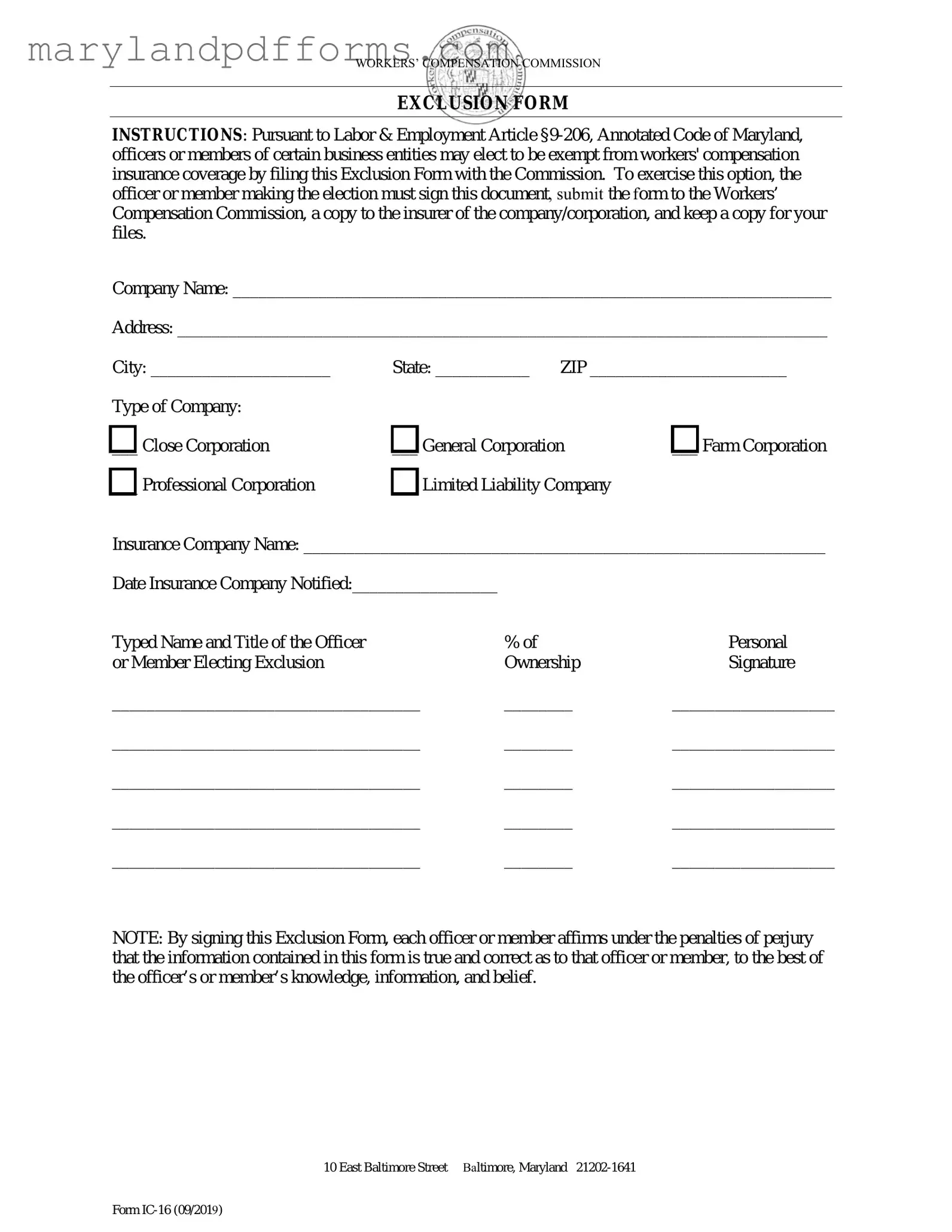The Maryland Exclusion Form allows certain officers or members of business entities to opt out of workers' compensation insurance coverage. This is in accordance with Maryland law, specifically Labor & Employment Article §9-206.
Officers or members of specific business types can use this form. Eligible entities include:
-
Close Corporations
-
General Corporations
-
Farm Corporations
-
Professional Corporations
-
Limited Liability Companies
To complete the form, follow these steps:
-
Fill in your company name and address.
-
Select the type of company you represent.
-
Provide the name of your insurance company.
-
Sign the form and include your title and ownership percentage.
You must submit the completed form to the Workers’ Compensation Commission. Additionally, send a copy to your insurance company and keep a copy for your records.
Once submitted, the Commission will process your request. If approved, you will be exempt from workers' compensation coverage as specified in the form.
Yes, by signing the form, you affirm that the information is true and correct. Providing false information can lead to penalties under perjury laws.
Yes, you can revoke your exclusion. However, you will need to notify the Workers’ Compensation Commission and your insurance company in writing to reinstate coverage.
If you have additional questions, contact the Workers’ Compensation Commission directly. They can provide guidance and clarify any concerns you may have regarding the form or the process.
